As the latest technology continues to reshape airlines, its impact on Hawaii flights raises questions. At the forefront of this tech shift, Alaska Airlines is rolling out its latest tools with the promise to more fully automate delay reduction, optimize routes, and bring a smoother experience to flights to and from Hawaii and elsewhere.
With the Alaska and Hawaiian Airlines merger now in play, this technology aims to create efficiencies across the board—but is it a genuine win for travelers or primarily a profit boost for the airline?
Hawaii-bound travelers know too well the sting of missed connections, gate reassignments, and last-minute schedule changes that leave them stranded mid-journey seeking customer service that is too busy or non-existent.
As Christine M., a longtime BOH reader, noted, “I missed a connection in Honolulu last spring, and I wish there’d been a heads-up or an alternative.”
The new technology developed with UP.Labs, called Odysee, touts itself as a solution to such headaches. It aims to simulate potential disruptions and adjust things for passengers before problems arise.
But for travelers like Christine, the big question remains: Will this mean smoother connections and fewer travel headaches, especially during peak seasons, or is it just another tool to optimize airline profits?
A better journey for Hawaii travelers or simply airline efficiency.
The journey to Hawaii isn’t just a flight—it’s a long-anticipated experience. Many trips to Hawaii are planned and booked months in advance, with high expectations for a smooth, memorable journey.
Alaska Airlines’ new machine learning tools claim to boost scheduling predictability, hinting at benefits like more reliable flights. However, alongside these promises to improve the traveler experience, an unmistakable aim is to streamline airline operations.
One potential benefit for Hawaii travelers is how technology could adapt schedules to meet peak and valley demand patterns. Hawaii sees a surge of travelers around holidays, special events, peak seasons, and times when overbooked flights and delays are almost expected.
Drawing from years of historical data, Alaska’s predictive tool is designed to adjust flight availability and align schedules to handle these seasonal travel spikes in real-time. And sure, for those familiar with Hawaii’s peak travel pains, anything that makes that journey smoother could be welcome.
Yet, there’s another side to this tech upgrade. While machine learning promises better experiences for travelers, it may be even more valuable for Alaska. Refining schedules and anticipating operational snags before they happen means savings for the airline—reducing rerouting costs, cancellations, and over-or-underbooked flights. For Alaska, machine learning is as much about profit protection as customer satisfaction, promising efficiency gains that keep their flights on time and costs down.
Hawaii as a testing ground for travel innovation.
With Alaska Airlines’ recent merger with Hawaiian Airlines, the state has become a focal point for testing the future of travel technology. Hawaii’s unique travel environment provides an ideal testing ground for refining these predictive tools between long-haul routes from the mainland and rapid-fire inter-island flights.
This would also, for example, be helpful if Alaska moves to a multiple aircraft scenario, where some interisland flights are fulfilled with mainland aircraft instead of the current or a new dedicated interisland fleet.
The obvious benefit for travelers is managing fluctuating tourist flows to complex inter-island connections. More inter-island flights during peak times would be a huge benefit.
Our visitors would love having more options. Alaska’s new predictive system could improve the coordination of frequency and timing of inter-island flights, making travel more convenient for residents and tourists alike.
Testing and refining this technology in Hawaii provides valuable data for Alaska and Hawaiian Airlines that may lead to improvements across other markets.
Sustainable skies benefits of predictive technology.
For some travelers and residents, the environmental impact of flights to Hawaii has become a growing concern. Alaska Airlines’ machine learning approach aims to address this by aligning with sustainability goals and promising greener routes through smarter scheduling.
The idea is simple: by suggesting more fuel-efficient paths and optimizing route planning, the technology could reduce the environmental footprint of Hawaii-bound flights. However, as with any “green” initiative, the real impact lies in the follow-through.
Theoretically, this technology could make a meaningful difference for long-haul flights, where even minor fuel savings add up over time. By minimizing fuel consumption, the airline gains cost savings and the potential to advance its eco-commitments.
Still, whether these optimizations will translate into significant environmental change remains to be seen. The true test will be how Alaska integrates these fuel-saving strategies and transparently communicates its progress to Hawaii’s eco-minded travelers.
The balance between computer and human airline employees.
While technology enhances decision-making, the question of human oversight—and potential job impacts—looms large. Alaska’s predictive system offers a powerful tool for planning, yet human judgment is claimed to have the final say.
But if machine learning takes on the heavy lifting of scheduling and customer service tasks, some wonder: Will digital tools replace roles once filled by real people?
One of the most direct benefits touted is enhanced support for travelers. Alaska’s predictive technology aims to quicken responses to delays, rebookings, and real-time updates—all managed digitally. Imagine landing in Honolulu after a delay, and instead of finding a customer service agent, you receive instant, tailored guidance via text or app, helping you navigate the rest of your journey. But without human intervention, will these interactions feel as personal?
In the long term, the hope is that machine learning can create an efficient travel experience without losing the human touch. For travelers, this might bring more reliability to every trip, but it raises questions about the need for as much face-to-face customer service at the airport.
While these tools undoubtedly improve resource management for Alaska, some worry about where automation stops, and human connection begins—something that has been a vital aspect of Hawaii travel that may be harder to replicate with digital solutions alone.
The verdict: a win for travelers and airlines?
This technology may bring clear benefits for Hawaii-bound travelers: a more reliable and eco-conscious travel experience tailored to the unique demands of getting to the islands. Alaska Airlines’ predictive technology is an intriguing development, aiming to smooth the journey, particularly during peak seasons and on busy routes or where delays and disruptions are common.
Yet, it’s also clear that this technology serves the airline’s goals, potentially reducing workforce needs while improving efficiency and meeting sustainability targets—all of which contribute directly to the bottom line. In this sense, machine learning may be a win for travelers and Alaska Airlines, offering a balance that could enhance the travel experience while optimizing the airline’s operations.
As Hawaii’s skies shift toward another new technology age, along with upcoming fleet changes and other operational shifts, travel to Hawaii may look quite different. For travelers, the hope is that these advancements will bring a more seamless, enjoyable journey—but as always, the true test will be in the experience.
What do you think about these changes? Are you ready to embrace a more digital, data-driven approach to Hawaii travel?
BOH image: Hawaiian Airlines at LAX.
Get Breaking Hawaii Travel News
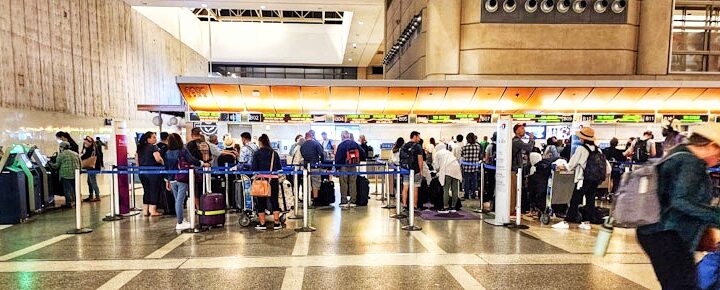

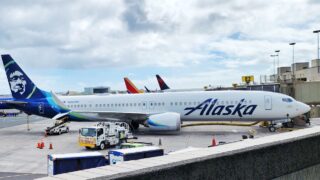

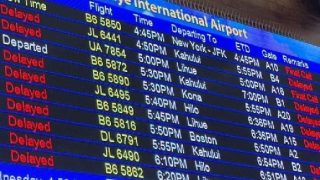
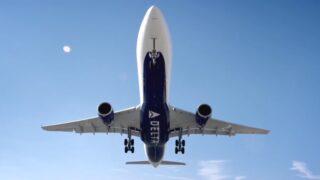
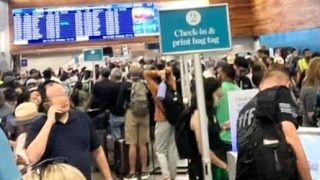
To err is human, to colossally fail requires a computer. There have been a number of massive failures in some of the backend computer systems, most recently with Delta. One hopes that as Alaska integrates their backend systems, that they put enough redundancy into them. Crew scheduling and resource tracking also must play into these optimizations, as it does no good to move people to different flights if the new flight doesn’t have any available crew legal to fly that segment. Union contracts and FAA regulations all play into this. ETOPS regulations may also impact the ability to fly the most fuel efficient route, which plays a bigger role on Hawaii domestic flights than any other domestic flights.
If this optimization software can address all of these issues, that’s great. Alaska seems to be playing catch-up, but that frequently results in leapfrog overtaking. United’s connection saver seems the one to beat at the passenger level.
No matter what it is always to the airlines benefit. Don’t like it. The choice is simple. Cancel or just don’t go. Businesses are in business to make a profit. Just common sense..
A benefit to the Alaskan merger with Hawaiian Could be the ability to pivot interisland schedules when mainland flights are delayed. But that requires maintaining a bit of slack and not overscheduling aircraft or people. Hawaiian had too few of both, and at that, the 717’s are old. Flexibility was not their pre-merger hallmark.
Seems like most every time I book a non-stop on Alaska they cancel the flight and try to re-route me from LAX to Seattle and then to my final destination.
I read many BOH readers are commenting about cancellation of Alaska flights being rebooked on Hawaiian Air. Always a hassle to change plans after booking, sounds like Alaska plans to cancel any flights that are not crowded. Sad synergy.
The preemptive rebooking due to delays has some issues: Case in point: Last March, son was flying OGG-LAX-ORD-SYR. While on the air to LAX, American decided that they would not make their ORD-SYR connection, which was still 8 to 10 hours away. So they rebooked them ORD-CTL-SYR (adding 12 more hours to their flight time). As it turns out, they made it to ORD in time but the gate agent wouldn’t let them change back to their original flight. If they didn’t to the preemptive rebooking all would’ve been well. Caveat emptor.
The mainline (DL, UA and AA) airlines now have their computers automatically rebook you if there is a need to do so. You can always call their customer service number and if you get through, ask for something else. It works well in most cases. Part of the reason the mainline airlines are going this way is to avoid using their interline agreements. This is where say a Delta cancellation will allow Delta to book you on a United flight. They want to keep you flying on their flights (and therefore get paid) instead of paying some other airline to take you. I suspect HA doesn’t have interline agreements with these three or AK but once HA and AK are joined they can help each other out this way. If the issue is weather, it’s common for all airlines to stop flying into the bad weather area a day or two before the storm is predicted to hit. This is to avoid stranding planes and crews on the ground during a blizzard etc. It also allows them to send “make-up” flights in after the event.
Odyssey is currently only in the testing phase and by all accounts only on Alaska branded flights so there isn’t much benefit to Hawaiian Airlines flights. Once both airlines are running on the same system it might help.
Flyaway, the route planning AI, has been in use at Alaska for about four years and has saved quite a bit of fuel. Again it wouldn’t affect Hawaiian until both airlines are running on the same backend.
Together they may save Alaska enough money to keep prices down. Time will tell.